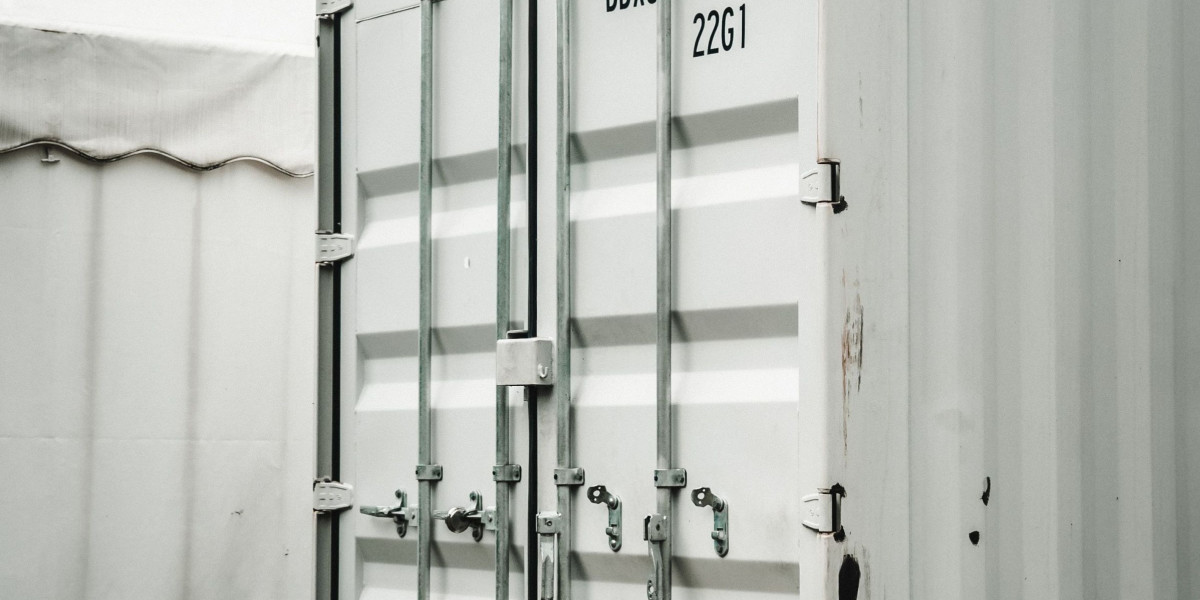When it comes to the logistics and transportation industry, the need to move oversized, heavy, or unusually shaped cargo is a common challenge. Standard shipping containers, although widely used, may not always suffice for such purposes.
This is where shipping container flat racks come into play. In this comprehensive guide, we’ll explore the world of shipping container flat racks, including their types, features, uses, advantages, and much more. Whether you’re involved in logistics, transportation, construction, agriculture, or simply curious about these unique cargo transport solutions, this guide will provide you with valuable insights.

Types of Shipping Container Flat Racks
Shipping container flat racks come in various types, each designed to cater to different cargo and logistical requirements. Understanding the distinctions between these types can be essential in selecting the right flat rack for your specific needs. The major types of flat racks include:
- Open-Top Flat Racks: These flat racks have an open roof, making them ideal for cargo that exceeds the container’s height. They are often used for transporting machinery, pipes, and other oversized cargo.
- Collapsible Flat Racks: Collapsible flat racks are designed to be folded when not in use, which helps save storage space. They are versatile and suitable for various cargo types.
- Platform Flat Racks: Platform flat racks offer a solid, flat surface for cargo, ensuring stability during transport. They are great for irregularly shaped items.
- Fixed-End Flat Racks: Fixed-end flat racks have solid ends, making them suitable for cargo that requires extra protection. They are commonly used for military and defense applications.
- Foldable-End Flat Racks: Foldable-end flat racks provide flexibility, with one or both ends that can be folded down to accommodate different cargo sizes.
Understanding the differences and applications of these flat rack types can help you make an informed decision when choosing the right one for your transportation needs.
Features and Specifications of Shipping Container Flat Racks
Before selecting a flat rack, it’s essential to consider their features and specifications, as these aspects greatly impact their functionality and suitability for specific cargo. Key considerations include:
- Dimensions and Weight Capacity: Flat racks come in various sizes, typically ranging from 10 to 40 feet. The weight capacity varies based on the type and design of the rack. It’s crucial to ensure that your chosen flat rack can accommodate the weight and size of your cargo.
- Materials Used in Manufacturing: High-quality materials, such as steel, are commonly used in flat rack construction. These materials ensure durability and long-lasting performance, even in harsh environments, making them a reliable choice for various industries.
- Loading and Unloading Options: Flat racks offer versatile loading and unloading options, including side loading, top loading, and crane loading, depending on your cargo and equipment.
- Special Features: Many flat racks come with features like lashing points, forklift pockets, and the ability to stack them. These features enhance their versatility and ease of use.
Common Uses of Shipping Container Flat Racks
Flat racks have a wide range of applications across various industries, including but not limited to:
- Transporting Oversized Cargo: Flat racks are perfect for transporting oversized cargo that doesn’t fit in standard containers. Machinery, equipment, and large components are often transported on flat racks.
- Shipping Heavy Machinery and Equipment: Industries like construction, manufacturing, and mining rely on flat racks to move heavy machinery and equipment efficiently.
- Military and Defense Applications: The solid construction and security features of flat racks make them essential in military and defense logistics.
- Agricultural and Construction Industries: Flat racks are widely used in agriculture and construction for transporting large items such as tractors, excavators, and construction materials.
Advantages of Using Shipping Container Flat Racks
The use of shipping container flat racks offers several advantages for businesses and industries:
- Cost-Effectiveness: Flat racks can often be a more budget-friendly choice compared to other specialized cargo transportation options, making them a cost-effective solution for many businesses.
- Versatility in Cargo Handling: The flexibility of flat racks allows for the secure transport of a wide variety of cargo types and sizes, making them a versatile choice for businesses with diverse transportation needs.
- Space-Saving During Return Shipping: Flat racks can be folded or stacked, which is particularly advantageous when they are not in use or during return shipping, as it saves valuable storage space.
- Customization Options: Businesses can customize flat racks with features like security doors, windows, air conditioners, and more to meet specific cargo requirements.
- Loading and Securing Cargo on Flat Racks: To ensure safe transportation, it’s crucial to understand how to load and secure cargo on flat racks effectively. Proper cargo loading and securing methods are vital for cargo safety during transit. Key considerations include:
- Best Practices for Securing Cargo on Flat Racks: Proper securing methods, including tie-down straps, chains, and blocking and bracing, are essential for cargo safety during transit.
- Importance of Cargo Weight Distribution: Distributing weight evenly across the flat rack is critical to maintaining balance and stability during transport.
- Use of Securing Tools and Accessories: Leveraging securing tools and accessories like twist locks, turnbuckles, and dunnage can help prevent cargo shifting and damage during transportation.
Shipping Container Regulations and Compliance
Adhering to international regulations and standards is vital for the safe and compliant use of flat racks in global transportation. Key considerations include:
- International Regulations and Standards: Familiarizing yourself with regulations such as ISO standards, CSC (Container Safety Convention), and specific country regulations that pertain to flat racks is essential for compliance and safe cargo transportation.
- Compliance with Safety and Environmental Requirements: Ensuring that flat racks meet safety and environmental requirements is crucial for preventing accidents and minimizing the ecological footprint of cargo transportation.
Maintenance and Care of Shipping Container Flat Racks
Taking care of your flat racks is essential to extend their lifespan and ensure safe usage. Key considerations include:
- Tips for Preserving the Lifespan of Flat Racks: Regular inspections, cleaning, and proper storage can help prevent rust and damage, prolonging the life of your flat racks and ensuring their reliability.
- Inspection and Repair Guidelines: Knowing how to inspect your flat racks for wear and tear and understanding when and how to carry out necessary repairs is vital to maintain their safety and functionality.
Buying or Renting Shipping Container Flat Racks
When it comes to acquiring flat racks, you have options to consider, and the choice often depends on your specific needs. Key considerations include:
- Considerations When Purchasing Flat Racks: Evaluating factors like your cargo needs, budget, and storage space is essential before making a purchase.
- Benefits of Renting Flat Racks for Specific Projects: For short-term or project-specific needs, renting flat racks can be a cost-effective solution, allowing you to save on upfront costs and storage.
- Cost Factors to Evaluate: Understanding the total cost of ownership, including maintenance, transport, and storage, is crucial when making the decision between buying and renting flat racks.
Final Words
Shipping container flat racks are a valuable asset in the world of logistics and transportation. Their versatility, cost-effectiveness, and durability make them a go-to choice for many industries.
Whether you’re moving heavy machinery, military equipment, retail goods, or anything else that can be stored in a container, flat racks provide a secure and efficient solution that meets various cargo transportation needs. If you’re in Connecticut, Massachusetts, Rhode Island, or New York and are looking for top-quality flat racks for your cargo needs, request your quote now.



